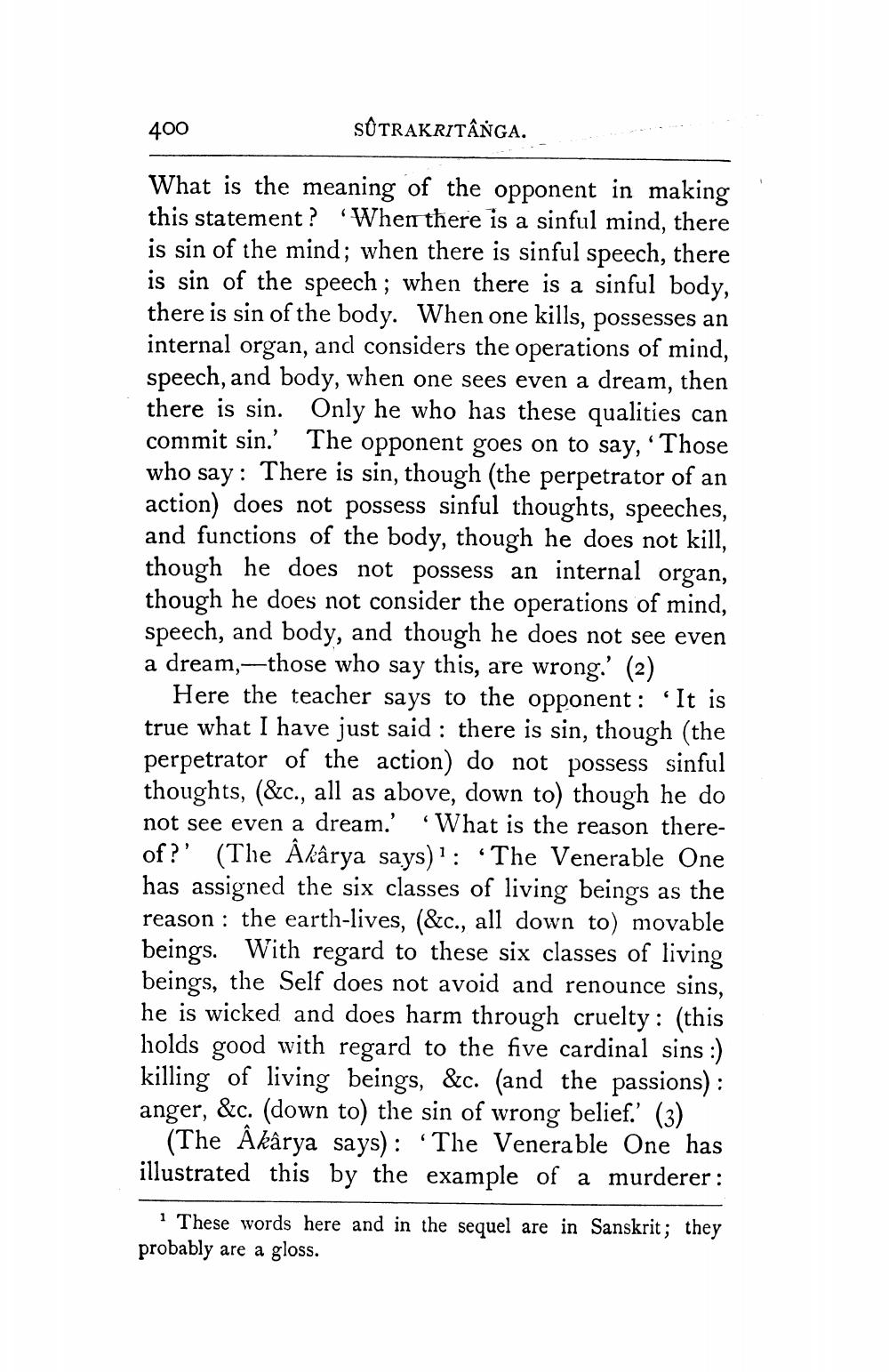________________
400
SUTRAKRITÂNGA.
What is the meaning of the opponent in making this statement? When there is a sinful mind, there is sin of the mind; when there is sinful speech, there is sin of the speech; when there is a sinful body, there is sin of the body. When one kills, possesses an internal organ, and considers the operations of mind, speech, and body, when one sees even a dream, then there is sin. Only he who has these qualities can commit sin.' The opponent goes on to say, 'Those who say: There is sin, though (the perpetrator of an action) does not possess sinful thoughts, speeches, and functions of the body, though he does not kill, though he does not possess an internal organ, though he does not consider the operations of mind, speech, and body, and though he does not see even a dream, those who say this, are wrong.' (2)
Here the teacher says to the opponent: 'It is true what I have just said: there is sin, though (the perpetrator of the action) do not possess sinful thoughts, (&c., all as above, down to) though he do not see even a dream.' 'What is the reason there
of?' (The Âkârya says)1: 'The Venerable One has assigned the six classes of living beings as the reason the earth-lives, (&c., all down to) movable beings. With regard to these six classes of living beings, the Self does not avoid and renounce sins, he is wicked and does harm through cruelty: (this holds good with regard to the five cardinal sins :) killing of living beings, &c. (and the passions): anger, &c. (down to) the sin of wrong belief.' (3)
(The Akarya says): 'The Venerable One has illustrated this by the example of a murderer:
1 These words here and in the sequel are in Sanskrit; they probably are a gloss.




